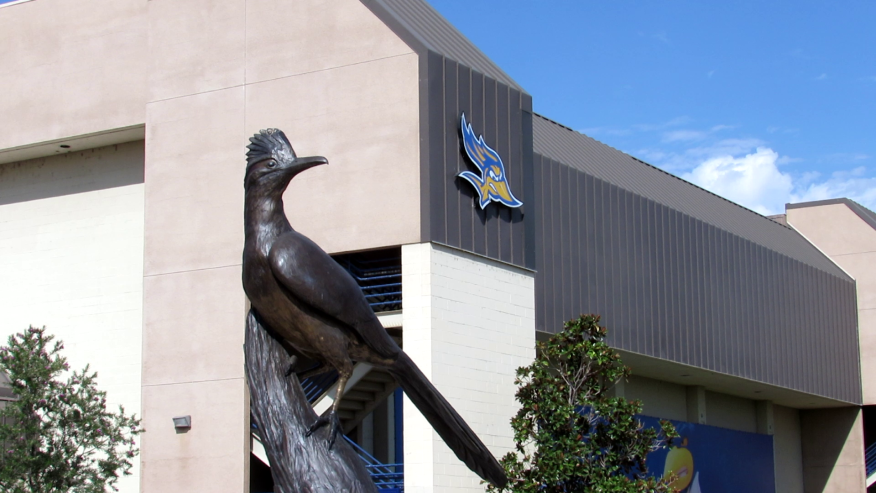
Left: The other hydration station located in the University Grille. Right: The proposed hydration station to be placed around campus.
Editor’s Note: This column is one half of a pro/con piece that ran in the May 14 edition of The Runner. Click here to view the counterpoint.
Men lie. Women lie. Numbers don’t.
By Steven Barker
Staff Writer
When ASI announced on May 2 that they would be spending $27,088 to provide 20 water bottle refilling stations throughout the Cal State Bakersfield campus, the pervading sentiment, at least among the students I encountered, was outrage.
“That’s a stupid idea,” some said; others also complained that ASI foolishly overspent our precious dollars on something few, if any, students would use.
Upon closer inspection, however, the refilling stations are a brilliant idea; they are a cost-efficient investment that reduces student expenditures and contributes in perpetuity to the university’s conservationist policies.
At its core, the water bottle stations exist to save us money. Not including tax, the price of the cheapest bottle of water sold in the Runner Cafe is $1.59. While this cost at first seems paltry, if we substitute the daily purchasing of one water bottle with reusing our current bottle, we save $7.95 during our five-day school week. That’s an extra meal per week. Across four weeks of school per month, the savings escalate to $31.80. That’s almost eight gallons of gas.
Similarly, the more bottles of water we refrain from purchasing, the more our savings grow. Drink two bottles of water a day? That’s another $3.18 per day, $15.90 per week and $63.60 per four weeks in savings were you to refill your bottle instead. Drink three? Your per month savings exceed $95. Now those totals don’t seem so trifling.
When viewed in comparison with the per-student cost of the water bottle stations, the stations are even more efficient. If we divide the cost of the stations by the number of students enrolled at CSUB and Antelope Valley, each student is paying $3.87 for technology whose savings exponentially exceed its cost. Additionally, with every passing year, the cost of the stations diminishes while the amount in savings grows.
Of course, while the extra money is a nice benefit, the refilling stations serve yet another, greater purpose; they help preserve our environment.
As Bill Nye recently argued on a segment of CNN’s show “Crossfire,” climate change is the foremost issue that we as humans face today. At a time in which our society’s awareness of its environmental impact is growing, these stations provide a more convenient method of reducing our consumption of plastics and, by extension, oil. These stations provide an opportunity to reduce our environmental footprint by reusing our products instead of consuming more and more of what we already have.
Even more importantly, these stations fulfill the moral obligations we have to both others and ourselves. As cash-strapped students, we have an obligation to ourselves to save as much of our own money as possible. As citizens of a drought-ravaged state, we have an obligation to other citizens to preserve what little water we have for future irrigation and consumption. And, as both mammals that inhabit a natural environment and sentient beings who understand that future generations will inherit our home – one that can be forever scarred by excessively consuming its resources and sending toxins into its waters and atmosphere – we have an obligation to the unborn to clean and preserve our planet – our one and only home – for the benefit of all.
These refilling stations, courtesy of ASI – which is to say, courtesy of years of fee money – are ultimately key steps in saving us money and preserving our planet.













